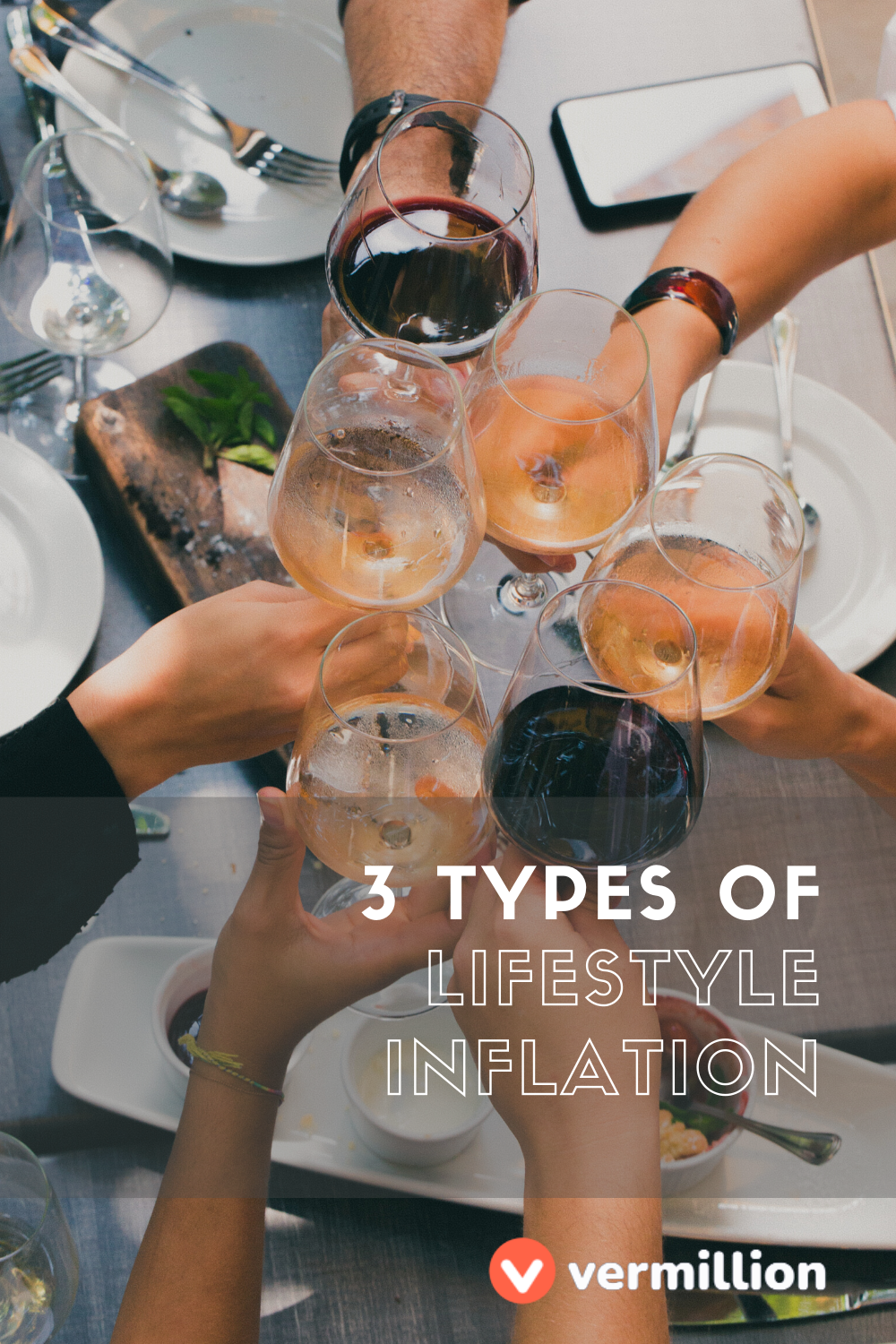3 Types Of Lifestyle Inflation (And How To Beat Them)


We’re fortunate to earn money when you click on links to products or services we already know and love. This helps support the blog and allows us to continue to release free content. Read our full disclosure here.
What happened to your spending the last time you got a raise at work? Did you sock it away as savings, or did it magically disappear like socks in the dryer?
Chances are no matter how diligent you were, at least a little bit got sucked away by lifestyle inflation.
Lifestyle inflation refers to increasing one's spending when income goes up. Lifestyle inflation tends to continue each time someone gets a raise, making it perpetually difficult to get out of debt, save for retirement or meet other big-picture financial goals. Lifestyle inflation is what causes people to get stuck in the rat race of working just to pay the bills.
Or worse yet, its horrendous sibling – lifestyle creep.
Lifestyle creep occurs when an individual's standard of living improves as their discretionary income rises and former luxuries become new necessities. A hallmark of lifestyle creep is a change in thinking and behavior that sees spending on nonessential items as a right rather than a choice.
This is unsurprisingly common among graduates fresh out of college. In school, money may be tight and needs are probably relatively low. College diets are famously cheap, and school takes up enough time that recreation is often on-campus or free.
But then you (hopefully) graduate and (again, hopefully) snag your first full-time job.
Suddenly earning tens of thousands of dollars can make you decide to loosen the budget belt. Maybe you can afford an apartment with fewer roommates – or none! A better diet makes sense, as does a new and professional wardrobe to go with that new job.
Is this an example of the Diderot Effect? Maybe.
Lifestyle inflation is insideous - it affects everyone from every income bracket, including the super wealthy. But with a little effort, you can stop it in its tracks and even reverse the damage.
Here are the three main ways lifestyle inflation can creep in.
Peer Pressure
It’s easy to spend more money when you’re doing it with other spendy people. If you hang around people who frequently eat at restaurants, go to large concerts, and take lavish vacations then you’ll probably want to do those things, too.
While it’s easy to say you should ditch your affluent friends in favor of some bootstrapped ones, life isn’t always that simple.
Just be sure to include this spending in your budget and practice saying “No” when the money runs out. If you’re uncomfortable being the one to order water at the bar, then you might suggest cheaper alternative venues for your get-togethers or choose to stay home.
There are plenty of benefits to a home-cooked meal and boardgame night beyond saving money – privacy, safety, quiet, and all the amenities of home.
Similarly, don’t feel guilted into giving expensive gifts. Make your values clear to your friends and focus on thoughtful, practical gifts – or none at all. If your friends aren't aligned with your savings goals and refuse to respect your decisions, they may not be the best influence.
You “Deserve” It
Maybe it’s that extra night out each week, or the bigger house, or the nicer car… You’re buying these things because you deserve them, right?
This is a loaded question.
Everyone deserves nice things – but people don’t always get what they deserve. The world isn’t fair. Instead, I have a mantra.
You can afford anything, but you can't afford everything. For example, you probably could afford a new car. But you probably can’t afford both the monthly payments and a 20% savings rate in your budget. You may not even be able to afford both the monthly payments and your rent. The choice is up to you.
Expensive Hobbies
Sometimes it feels like people are just looking for extra ways to spend their money. Are you an avid sports fan with season tickets and tons of merch? Do you love an activity that requires lots of obscure and spendy equipment, cards, or game figures?
If you enjoy those things – great! But they may be costing you a lot when you really dig in.
We use spending as a form of expression. We buy things that describe who we want to be. But often this isn’t even followed by actually being that person. How many kits or crafts have we purchased that now sit collecting dust in the attic?
Don’t even get me started on collectibles.
Keep a careful eye on how much money you’d like your hobbies to take up. Personally I opt for hobbies that involve creating rather than consuming. Bonus if they’re cheap or free.
How to avoid the spending creep
Keeping lifestyle inflation at bay, no matter the cause, is possible using three simple steps:
- Detect it. This is easy if you keep a budget. Look for patterns of increased spending. Similarly, when you get a raise of influx of cash – save it!
- Question it. When you decide to increase the amount of money in a budget category, ask yourself why. Is this a one-time increase, or will it continue? Will it impact your other goals?
- Arrange for alternatives. If you decide the additional spending needs to stop, you need to brainstorm other ways to get your fix. Instead of a date night out every week, consider a special home-cooked meal or a picnic.
When in doubt, keep a budget and graph your monthly income and spending over time à la Your Money Or Your Life.
Related Posts

How To Get One Month Ahead

Case Study: Claire





